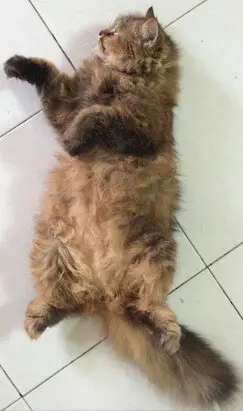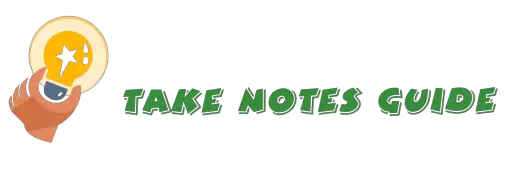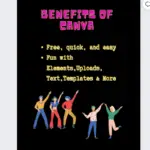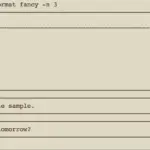I am exploring how a writer may take notes or how one may take notes for writing a book. I assume some writers normally read a lot more than the average person, probably have to do some preparation and researching before starting to write the first chapter. So this post is more for helping writers take notes on the preparation (method, templates & apps) and researching (tools) parts of writing a new book or novel.
How to take notes for writers?
Methods
- Non-fiction writer or blogger: Idea-Research-Better_Idea-Supports
- Fiction writer: Take after your favorite book (version one and two)
Templates and Apps
- Evernote templates for different genres
- Gingkoapp templates for different purposes
More Writing Apps
- Big Labs Writer – Minimalistic web writing app
- Pure Writer App – Minimalistic android writing app
- Typora – Elegant Mac markdown writing app
Research Tools
- Words – Mac built-in lookup And Grammarly
- Refine google search and related results
- Google Scholar search – Research studies and papers
- Zotero – Collecting numerous studies for non-fiction book research
More
- Writing With Jeeves and Woosters Course
- NaNoWriMo – Fun approach to target writing with a community
I prefer free note-taking (or writing) solutions or at least starting with a free account to know how well it works out first so you can decide an upgrade is worth it. A good writer may still write well even in unfavorable conditions without the latest gadgets. However, certain setups such as a homey place, the right tea, a preferred writing method, and an elegant writing app may help inspire writers to fire up their literary works.
For non-fiction writers
Method: Idea-Research-Better_Idea-Supports
Do lots of research, the more we learn and write as we learn, the more we can deliver to our readers. For example, we have an idea. We may have to carry out some practicals and experiments or research hard for information with what we can in our capacity and then brainstorm for new creative ideas and again look for more factual supports and evidence (if available) to affirm our statements and theory. It is also possible we start with reading up on studies and papers first, then formulate a certain feasible idea/theory before testing and experimenting for conclusive results.
Document the detailed process to compile into a non-fiction book or research paper (How To Take Notes For Research Paper). You may also follow closely to retrace the steps in creating the structure of your favorite non-fiction book as a reference and example.
The process is just a suggestion, but you should have the main elements of researching and ideas brainstorming.
Take for example this non-fiction post which I would consider more informative than inspirational type. The information here is based on both research with screenshots and sensible writings, though I may not necessarily strictly follow the idea-research-better_idea-support process.
Publishing in modern times has evolved. Non-fiction writers are no longer limited to physical and digital books publishing. We have the option to blog and publish post content to our own blog domain or blog/content hosting sites such as Blogger, WordPress, and Medium, and even covert our blog or notes into video format and upload them to YouTube. Non-fiction publishing still has immense value. Authors may monetize their good content with blogging and YouTube but I believe you need a proven structure or learn by experimenting with generating loads of good content for readers and viewers that come back for more.
Evernote Project template for non-fiction
Overview: Have an individual project template for the overview of what the book is about, including a Table of Content with all the possible chapters. Put all ideas in notes points. Insert links to each chapter note once created.
Treat each chapter as a new individual project: For each and every chapter, start a new individual project when you are ready to research and write on the chapter. Write the ideas as notes in the chapter’s project template. When ready to write the chapter draft for publishing, start a new note with the chapter in the title and type away. Right-click the note -> Copy Note Link, and paste that link back to the chapter template to keep organized.

Gingkoapp for Non-fiction
Academic paper and Project Planning templates are self-explanatory. Gingkoapp Tree can be a powerful and even easier way to start writing your paper or book. You may just start from a new blank Gingkoapp Tree with a main idea or book title. And add on elements in Table Of Content including chapters as child notes. For each chapter, just add new ideas to complete the structure. This provides both an overview and details at a glance or more as you click on the child note to expand more child notes. You may write your last note on the chapter as a publishing draft, or create a new Tree for your final draft. Gingkoapp micro-publishing option is possible, in addition to Markdown and HTML export. Visit gingkoapp.com/faq when you have a common question.

Please feel free to quickly take a look and copy from these to take action if you are the type who prefer learning from examples:
Gingkoapp even has a Blogging template for your reference and copy though I do not follow this format.
Google Docs for Non-fiction
Copy this template for your research report.
For Fiction Writers
Take after your favorite book version one: Analysis, 3-Steps, and Fun-Nailing
Probably the best (natural and fastest) way to learn and write comes from your most inspirational or favorite book. In this case, the answer may have been staring in your face for some time. Another advantage to working with your favorite book is your interest and compelling drive to master it even when you have to repeatedly study it. Further, a writer will have more confidence this way because of his existing knowledge, understanding and ideas give him a head start.
Why does this work?
It is natural for us to follow after our parents, heroes, and masters. How do we leverage this knowledge? Look at your favorite book that you want to write in a similar style from a different perspective – a writer’s angle instead of a reader. Shift change into the mental gear of a writer. You may also start with your favorite short story (a story length of around Sherlock Holmes shorts will be fine) so you can better practice the method first.
Analysis
- How would you as a writer plan on writing such a book?
- How would the starting notes look like?
- How did the storyline flow?
- How and where did the plot build-up, the setup, character development, the twists and turns, surprises, climax, ending and what next?
- What are the improvements in different aspects you prefer?
- Do you feel strongly about a particular part that you love or dislike?
- Do you feel someone or something is amiss or missing that you want to see more of?
In short, take important notes first to critical questions of writing this book like you are the author of your favorite book and beyond. This preparatory stage may help the writer later when he has more to work with.
3 steps changes – ending, middle, and start
Since it is one of your favorite books, you should be able to contemplate well the chapters and take main notes of the plot and interesting aspects. You should know the book story like the back of your hand. So much so you are confident you can create new versions of the story, like the numerous spin-offs of Sherlock Holmes stories, including the modern and action-packed ones.
- Change the ending
- Next, change one critical element in the middle and write a different ending to get a feel of writing
- Once you have done that, the next time make changes near the start and write away your new story
You may have to first take multiple notes instead of writing the whole story to explore the possibilities for the best possible story you can come up with.
Nailing the fun element
Practice the part you want to master. For example, let’s say the book has the style of unique and captivating dialogue. You may start with just transcribing and typing out word for word on a note app to get used to the format, language, and style. After a while, progress to making up similar convincing dialogues with different settings and keep practicing until you are satisfied. Then use this newfound power in your own language, story setting, or style like nailing a song by making it your own. Make no mistake, this is where you excel and shine with your writing and set you apart from other authors – your unique way of grabbing your readers’ attention, delight, and entertain them with your plot, setting, character development, or dialogues and so on that, you practiced. Certain stories may be somewhat lacking in one way but they may capitalize on a strength that readers are just riveted upon. As a reference for beginners, please jump right to Writing Really Good Dialogue on the left. Take insightful notes on how your favorite author did it and where you should emulate and modify it. You may also have a different book for your favorite dialogues style, another favorite book for the mystery elements. This is fine when you write and combine these together in your own book.
With Analysis, 3-Steps, and Fun-Nailing, you should have a story coming up or even completed one depending on the story length and how much hard work you put in – Congratulations!
Tip One: Kickstart a notes-taking or writing session
Playing the right song may help you overcome the inertia block, especially when the song is an emotional one that has a story. Write about the song or musical piece if you like and maybe ‘bring’ it into your novel or short story. And write often to keep the momentum going.
Tip Two: Read out for a voice note
Those who are traveling or do not have a keyboard in front may read out one page at a time while recording and saving into an Evernote note app. I believe reading out can also make an imprint on learning after your favorite author. Some musicians can play by ear as well, plus reading may be faster than typing and more intriguing with a humorous or animated cadence. This can work well for people with good voice quality, and even consider a career as an audiobook narrator. Consider this article on reading aloud and watch a funny YouTube voice prank for inspiration.
Write with a structure or blank page?
Some people may prefer structured writing while others start from a blank page. Possibly you may have a mixture of both to discover what works best for you. There can be cases when you take notes or random writings whenever good ideas arise, and these will help complete your book. You may wish to read on the 4 ways to take notes on a blank page in Revolutionize With Different Ways To Take Notes.
What next after you wrote your book?
If you have created a new story from your favorite book, then it is likely you can create the next part or another spin-off when you are brimming with ideas. These new ideas or inspirations can come while you are writing away on an existing story or idea. You may also repeat the process with your second favorite book and possibly add on to your series. Please bear in mind to be original in your works though, our goal is not to copy the works or ideas of other authors but to use their works as a learning platform to help us generate a structure and new ideas for a new story in your own style. NaNoWriMo also supports the process for revision and publishing of your book after writing.
Evernote for fiction writers
Evernote is an app that has templates for different genres. For example for writers under creative writing categories, there is Character Profile (Bio, appearance, speech, behavior, and background), Story Dashboard, Novel Plotting: 3 Act Structure (Act I – The Beginning, Act II – The Middle & After The Reversal and Act III – Resolution) and Story Premise Worksheet (with example).

You may create a new notebook in Evernote and put in all your templates and chapters notes in that notebook. For writing with words only, you should be well within the 60MB monthly limit even if you write a lot. Images inserts can be reduced in sized (mentioned under Related Questions in How To Take Notes For A Meeting) and exported to JPG with Skitch (an Evernote product) for free.
Gingkoapp for fiction writers
Gingkoapp is a web app that has an intuitive and unique left-to-right branch out from each note. When you select a particular note, all its direct child notes will be also be highlighted by the change of background color from grey to white. It has templates for different purposes. Writers can take notes and write a book or novel and screenplay. Students can take notes with research papers or thesis and engineers can document specs for software and products. Gingkoapp is free (100 cards per month currently) and affordable to upgrade and should be worth it if you are very productive with it.
More examples and templates:
- Romeo and Juliet example
- For NaNoWriMo, there are Story Arc and NaNoWriMo Prep templates
- Snowflake method template

Take after your favorite book version two (Repeating after your favorite book exercise):
Copy and take notes, create a new story and write with your style
- First-round. Take out your favorite book, non-fiction or fiction, and start writing or typing away word for word from page one. Type as much as you want, but the more you type the more you learn and the higher the memory retention. Finishing typing the whole book will be a good preparatory start. This can take some time but practice and repeating is important to mastery. The goal here is not to be a human copier machine, but to reflect and think about new what-ifs and creative brainstorming as you copy away. Stop copying when an idea arises.
When you have a new or better idea, words to learn, and any observations, note them all down on a separate note. In particular, take a break after each chapter, take the time to reflect, and take notes. This part is important for proceeding to the next. You may copy by hand the book and type into a note app your creative ideas.
- Second Round. From your notes, fill in with new details such as character, background, settings, story plot twists, and ending. It is fine even when the new story is different from your notes as long as it is a good original story.
- Third round. Write the whole new story. Start with the style you just learned. Over time, you should develop your own unique writing personality. After you finish writing the story, go through it again and rewrite the parts that you think are too similar to the original author. It will be even better if someone can proofread and enhance it.
This is a second alternative way to write a story but remember it has to be original and different enough to call your own. The advantage to this version is that it basically hard to drill the new author to write or type away from the start and once he has done enough, he can recall from mental muscle memory to type away as he did so many times before. Putting in the effort to write out by hand the whole novel or story may be more beneficial in this case to register and make a memorable association. I would say version 2 is more beginner-friendly, but you should not have to type out a whole book to have new ideas.
Depending on your book-length, you may just start with one chapter at a time if your favorite book is a thick one that may seem too daunting a task at one go. Or pick your favorite short story instead. I would think one can learn a lot from a good chapter or short story even by repeating the process many times on the same pages. You may set a feasible number to how many pages you want to copy each day or chapter each week for an attainable and actionable timeline.
The beauty of the The-take-after-your-favourite-book-method is the simplicity of learning to write with just any good book and your favorite one at that. How many people you know can connect with this book as well as you do? It will be even more fun and motivating if a trusted group of like-minded writing friends gather to compare notes weekly on the same chapters. The other advantage being it defines an immediate start task (copying word for word from the book) that you can act on without uncertainty and excuse to procrastinate.
Bonus Tip: Take your favorite book (version 3) to the next level for intermediate and advanced writers
For those who are ready for more after earlier exercises and expert writers who suppose they can do better at least in certain aspects i.e. writing in a contemporary and modern style or thrilling plot, this can be your next challenge: Read into a few chapters or the whole book, take notes of improvement ideas and write in your own words a short or series. From the notes, write in an engaging manner that resonates emotionally with the experience of readers or draws them into the story. This is for our own personal practice of taking notes and writing, not for publishing yet. You may likely give rise to a new novel idea if not multiple whiles on this exercise. The goal here is to get you on a writing roll so you may continue on to a brand new series of your own original ideas. Traditionally, authors may force themselves to sit there indefinitely and expect themselves to write a brand new novel without any prompts, steps, or built-up process. However, you do have a choice to start somewhere to gradually gain momentum to be in your writing element. You may also read aloud, type at the same time, and take notes of new ideas before writing your new piece. Good luck and congratulations to those who made it and find success here!
More Writing Apps
Big Huge Labs Writer is a web app that allows you to write in a minimalistic internet typewriter environment. It depends on the writer if he prefers to write with striking green words on a dark background or not. But I think it is worth a mention for people who feel they can write better this way with lesser distraction.

Pure Writer App – Android app
I also prefer to recommend free and minimalistic options for writers who wish to write in this way. Sometimes when we do not have a desktop computer with us, we may still write notes and even a full chapter on our smartphones. With your smartphone, you may play your favorite music while you sit on a train and enjoy the view of passing sceneries, and take photos and notes when good ideas arise. Simplicity can work for writers.
Why Pure Writer? For 3 reasons, it is free with optional in-app purchases, minimalistic as you can see, and claims to never lose content ever. I like that it can easily share content with your other phone apps.


If you are wondering what can be done on a phone writing app, below here is an example of a short episode I have written in Pure Writer.
A not-so-mini adventure of Mimi the cat
The paper box was in the living room by the sofa, opened and empty, as if gently luring her with a baby lullaby “come here and sleep in here, I will protect and keep you warm.” Mimi stared at it for a long while, contemplating the merit and danger of this new, alien object that is so inviting.
Though she knew they love her very much, her human companions were busy with their own matters then and she was fine with being left alone then. With nothing to stop her, she finally succumbed to temptation. She slowly approached the brown box with caution, her feline instinct seeking out any sudden movements or dangerous snake-like form with intense big eyes without so much as a blink. In her younger days, her reflexes were so sharp that when scared and surprised by human touch, her body can leap up three feet high in an instant.
In the box, there is a hidden compartment that she found to be even cozier and warmer and she snuggled right in, cuddled up just like any lovable 🐈 would, and dozed off without a care in the world, indifferent to all outside sounds.

Oblivious to the outside world, ignoring all sounds she heard, she slept peacefully and dreamlessly. She finally woke uncertain of how long she slept. Weird, she thought, is she still in a dream? The house is quiet, inside out. The yellow sunset rays lit up the room beautifully. Alone again, she resigned. But there is something different this time, like a deep, heavy sadness weighing down the air. Where is everyone, she wondered. Her favorite boy, caring Mum, and strong yet tender Dad, all but nowhere seen. A realization dawned on her. This is not the house she knew, but a creation from her memory. The house then disintegrated and vanished, and only light and cloud remain. She knew that instant she could never go back. Immediately, she missed her humans and her heavy heart sank knowing it was over. Their love, hugs, kisses, and tears were gone. She also knew she must let go of the past. But she can wish them love and blessings for happiness. They loved her in her short time with them, this she understood and felt.
When alive, she feared death terribly, but she avoided her humans family when she knew by a natural instinct that the inevitable drew near. There was nothing she can do to change her impending death, but she did make sure she at least said her goodbyes in her own way by being close to each of them or meowing ever so softly.
We all have to leave behind our worldly family at one time or another, please let loving and good people come and stay with her in peace and happiness, she wished fervently…
Prologue: This is a fictional story based on Mimi, a beautiful local mixed breed Maine coon lookalike. She lived for about 15 years before passing away in March 2018.

Mac app
Typora is a free (in beta) Mac app that allows note-takers, authors, and writers who employ markdown format to write. The strength of Typora is in its beautiful layout design with a live seamless preview. It does not really matter much if you do not want to learn markdown and just type away the words. A writer may just use Typora to write and copy over the content into an organized app such as Evernote or Gingkoapp later. Take markdown notes in bullets points by typing * followed a space and your sentence. Hit enter and type away your next point. One may learn more in Markdown Editors For Note-taking; Typora is an elegant editor for note-takers and writers alike.
Research Tools
Words
Note-takers and writers may have to look up a word for the meaning, usage, and synonyms. Mac OS X has a built-in dictionary by selecting the word and right-click -> Look Up; This can also display the word’s meaning in other languages. In addition, you can easily click Wikipedia and others for more information.
Bonus Tip: Online encyclopedia – Wikipedia
Old encyclopedia books can hold a wealth of uncommon knowledge that never occurred to us for daily applications before. The key here is to filter for the right information. Wikipedia featured page or random page for new, creative works of inspirational ingenuity is a viable recourse, conceivably even better given the constant updates and additions of information. Takes only notes of interest from the plethora of information to avoid being overloaded and overwhelmed. However, one has to consider the validity of the articles’ truth before believing everything at face value. After all, these are written and contributed by typical internet users of everyday people.

Those who are not on Mac can go on dictionary.com instead. Grammarly can also be a useful tool to help proofread for grammar and spelling mistakes.
Refine google search
Google has some search Techniques for people looking for a specific type of information. For example, you can google “most * in the world” for wildcards results. Or google “all in one cooker -Philips” to search for all in one cooker but less the ones with the word Philips. Also, the related searches near the bottom of the google search result page may give you some ideas relating to your story or research.

Google Scholar
Research studies and papers with Google Scholar. This can be particularly useful when you are looking for evidence and supports for your thesis or non-fiction book.

Zotero
I have mentioned Zotero in my previous posts e.g.Top 17 Ways How To Take Notes For Sharing. Zotero is an app for collecting papers & studies, takes notes and create citations & bibliographies for your book, thesis, or blog research. Co-writers may view documents you shared in a group you created.
More
Writing With Jeeves and Woosters Course
This is a good learning opportunity: An online course ($69) from June to August 2021 for aspiring writers (adults and students) wishing to apply Wodehouse’s techniques and principles to their own writing. Register here. Serious and beginning writers may benefit from the free (blog and podcast) and $14.95/mo or $149/year membership (forum, webinars, archived and live writing classes, and more) resources at The Habit.
NaNoWriMo (National Novel Writing Month)
NaNoWriMo (NNWM), though not particularly for note-taking, has come a long way as an approach that helps writers write. It targets November for writing 50,000 words but it’s your choice to prepare early. In addition to being a guide, perhaps more importantly is the active community to encourage, advise and motivate one another. The Facebook group is quite active. Camp NaNoWriMo goes beyond, online campers may enter writing projects every April and July, and you can be sorted into a cabin with other writers together. Those under 18 can opt for YWP (Young Writers Program). Personally, I like its clean and user-friendly design. For writers, NNWM can be your main resource to help you keep track of your progress and get inspiration. I would recommend NNWM over some other writing course or group because of its annual event and active community support. But I would say the main driving factor is still yourself: Your Will To Want To Write. You can even write with a simple Google document or any note app as long as you write. And write well. People want to read good content or story just as you would want to. Your book can start by taking note of a good idea and grow from there…
How good is NaNoWriMo?
For example, take a look at the YWP program workbook that guides the writer from outlining to dialogue with examples and fill-in box prompts. And this extensive workbook of over 60 pages is actually out there to help young writers for free. I would think students can learn well and fast with short samples and quick exercises as taught.
For the purpose of the note-taking, writers may even use this guide to fill in the points and build up the outline of the story from the ground up (or modify to your needs as you advance), and start focusing on writing the chapters once the main notes ideas are completed. In other words, this can be a starting template for notes and ideas. Writers may also go straight for help on novel planning out with NaNo Prep page.
Tip: How to get into the mood to write my novel?
NaNo Prep Time 30 points list.
Novel writers may plan ahead and take notes to sort out the main ideas and points of the story unless he is the type who writes from a blank page all the way to the end. The advantage of planning ahead is the relief from the stress and worry of not knowing the story will work out or not, and how long it may take to complete it. Planning your novel is like dividing up a big challenge into conquerable chapters. An Evernote Reflect and Correct 30-day challenge that evaluates the weekly templates may help.
However, we have to be realistic with the odds of success with NaNoWriMo. These are seven published books that began as NaNoWriMo novels, but most might not succeed.
Also, prioritizing and setting a daily first few hours of sitting tasks checklist and jotting down our ideas alongside may help us to be productive.

What should I write about?
- Personally, I recommend writing non-fiction. Behold truth. A person may write and earn from a fiction book series, but what we write matters. Are we writing about immoral or ethically questionable content that we would not even want our children to read about? We can do not mean we should. There are many popular non-fiction books on Amazon that authors sell too. We just need to put in the hard work and research to write quality books and/or blogs that even you want to read and buy.
- Write thought-provoking stuff. Those that correctly question the illogical, prejudiced and biased. Perhaps an example of such a novel is To Kill A Mockingbird. Question misogyny and animals slaughter. Write with a clear conscience.
- I say we write about truth, compassion, love, and equality of lives. A novel may be based on a true story, and it can be heart-warming and lovable at that too! An example is A Street Cat Named Bob. Be an honest and honorable person in life. Cause and effect. Be kind.
Conclusion
For non-fiction writers, the Idea-Research-Better_Idea-Supports method: Have an idea, research and come up with a better idea and look for possible Supports.
For fiction writers, Take after your favorite book method: Analysis, 3-Steps, and Fun-Nailing or fill up any of the templates you prefer. NaNoWriMo is a fun approach with guidance, tools, and community to achieve your writing target.
The rest are just tools or apps to help you achieve your note-taking and writing goals.
Non-fiction, book, or blog, is my recommendation, and whatever you write the most important is to deliver value and quality (with your research and hard work) to your readers. Let your work be a memorable one that benefits others. Best of luck!
Related Questions
What if I cannot write well?
I understand we all have different backgrounds, dispositions, and aptitudes. I believe writing like any other skill becomes better with practice, just like blogging these TakeNotesGuide posts. There are people who are more talented and gifted than others in a particular way or field, and whether a person has the training, encouragement, and different external conditions to develop them are all factors. That does not definitely mean they will or will not continue to be so. Someone you know may have good grades across, does that mean he or she will become a journalist, writer, chemist, geologist, historian, mathematician, linguist, and teacher all at the same time?
We can make our own choices. These choices can be decisive to happiness. We do what we can and we can channel our efforts into becoming good at what we want or at least we give it a shot. If you do decide to become a good writer, then work hard towards it. You may make a habit to write on most days when you can i.e. Daily word counts of some famous writers. Or even plan to write 50,000 words in November every year with NaNoWriMo. Whatever you do, let your choices count towards good and love for others. Our human life is limited so let it be worth living for.
A tip for aspiring writers who lacks confidence:
Write daily on any wholesome interest. The more you write the more experience and confidence you have. It is simply a matter of skillful practice, just as we learn to crawl, walk, jump and run. But it is a mental muscle we need to build and flex regularly to maintain that level of finesse. Interest writing is just to help jumpstart your writing inertia, what follows can be your next chosen topic. This should also work for those who wish to write in a different genre but felt clueless and helpless to start. For your chosen genre, start writing anything in that setting and language style with basic sentences, or even just follow and type along with your favorite book of this genre sentence by sentence until you feel confident and naturally experiment by writing away on your own. Following and typing away from a book can be a very good exercise to get familiar with the uncommon words, the flow of language style, and how the characters speak. It can associate and build thoughts-to-hand coordination. In addition, a lengthy copying exercise should leave a strong mental impression that can assist you in writing your new work by recalling your training. So do not underestimate the value of learning from your favorite book.
Factors that may help us write well?
Our immediate environment can affect us. You may find yourself writing better when you are relaxed at home with a cup of hot tea, a radio station playing light music in the background, and your cat cuddled and sleeping beside you. And treat others well and kind, and you would not have to worry about retribution from those who we mistreated. So say kind words to your parents the next time you see them. Tell those you love you are here for them.
You may also read my other post: 10 Ideas When To Take Notes.
What if I just want to take notes for an existing book?
Read through a chapter first, summarize in one sentence mainly what happened. Elaborate into a few or more sentences for more notes. Repeat for all chapters. Then summarize what you thought of the whole book for the main blurb. You may wish to read How To Take Notes On A Novel for more ideas.
How to create ebooks?
- Apple pages – Mac App or iCloud pages
- Google Docs – Go to File -> Download as EPUB publication
- Gingkoapp – Micropublishing options with different formats e.g. Epub, Mobi, Kindle, PDF
- Writer Pro version – Web writing app
- Typora – Mac App (requires Pandoc installation)



Should I write my book in Evernote?
This long post is typed in Evernote. You can even type on Evernote Android app with a 🌃 dark background, just enable dark theme on the left pane.
More writer resources?
Snopes, a fact-checker service, has certain news articles or claims that are evaluated given ratings i.e. Mixture / False / True. For new or interesting information, I learned this from Refdesk – Did you know children in Costa Rica’s rural areas learn lessons from a national radio station? This affirms my sentiment that listening can be a very effective way of learning.
You may use a bookstand or holder so you can type away while looking at the pages. Or check out your nearest stores if they sell these. For those keen on using templates for non-fiction, this is the only non-fiction book templates kindle book. A writing prompt deck is designed to help cure writer’s block.

Is there a game to assist kids with learning words?

For more hints on taking notes, you are welcome to explore other posts on Takenotesguide.







